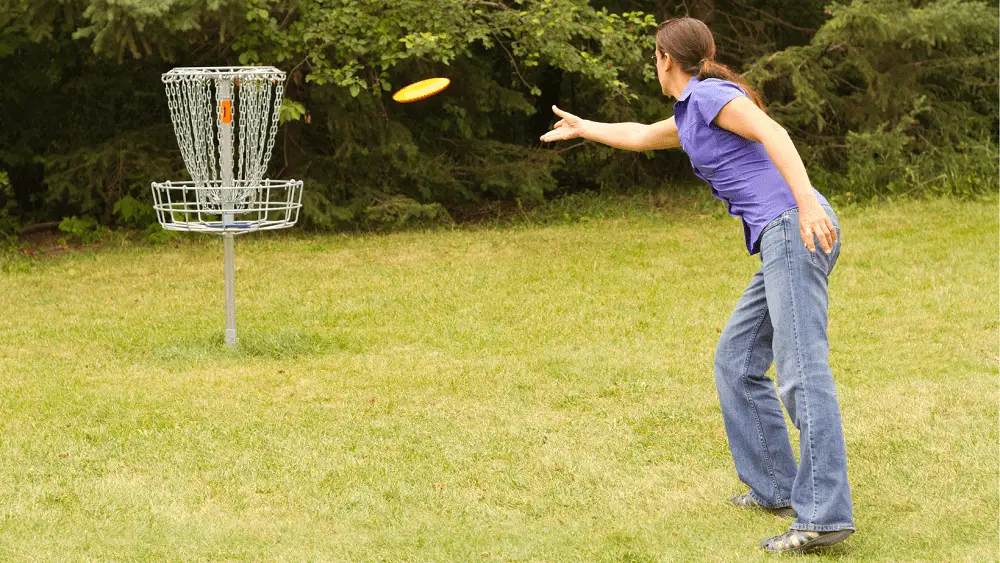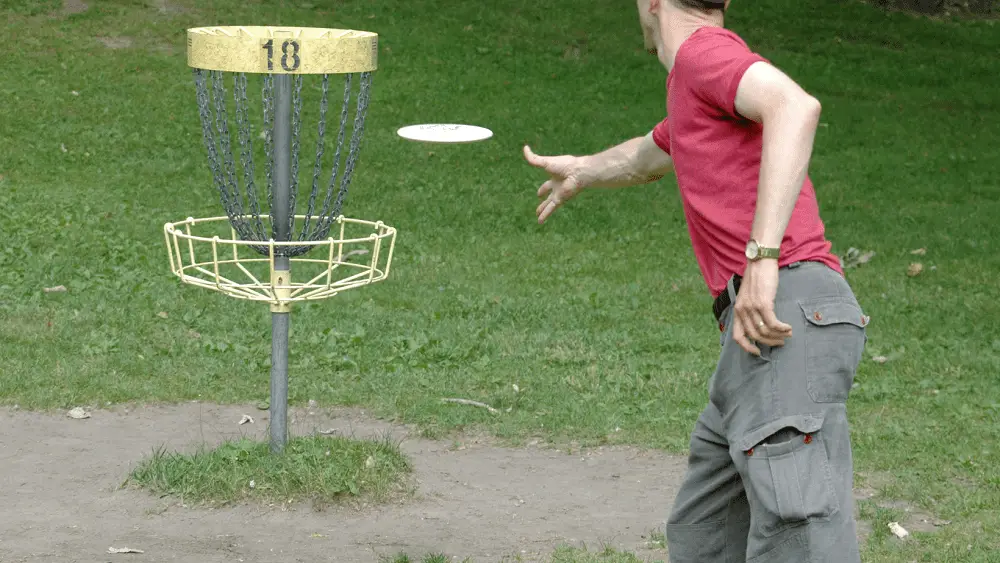Disc Golf can be a fun game to play with friends, but that doesn’t mean it’s without rules and penalties. A few things can lead to penalties in Disc Golf, including missing the Mandatory or ‘Mando’ (a directional obstacle on the course that indicates how a player must play a hole), your disc landing in an Out of Bounds or hazards area, or committing foot faults or stance violations.
Below, we’ll take a look at some of these causes for penalties, and what the penalties are so you’re not caught off guard during your next tournament – or friendly competition!

Out of Bounds
Nobody wants to be in the Out of Bounds area, but unfortunately all too many Disc Golf players find themselves there. When a disc goes ‘out of bounds’ it lands in an area that is outside of the regular playing area on a disc golf course.
But there is some confusion about what happens when your disc goes out of bounds. Namely, is it a penalty?
Unfortunately, it is a penalty. If you throw your disc out of bounds, you forfeit a throw but you still get to play from just within the bounds, the spot you previously threw from, or a designated drop zone.
The PDGA rule for throwing a disc Out of Bounds is stated in the Official Rules for Disc Golf.
It defines what an Out of Bounds shot is, stating that you must take a penalty stroke for throwing your disc Out of Bounds, and also tells you where you need to take your next throw from.
As far as penalties go, it’s not too bad and you shouldn’t let it stress you out too much. However, it’s always worth being careful, as the Out of Bounds area can be detrimental to your game.
It may seem obvious, but try your very best to avoid the Out of Bounds area. But we get it if you do land up there from time to time, mistakes happen.
Out of Bound Penalties vs Hazard Penalties
Hazard Penalties are a bit different to Out of Bounds penalties and are not always present in tournament play. You’re unlikely to find them on most average disc golf course layouts, but some Tournament Directors like to include them to make the game more challenging. Plus, some courses do naturally have some hazard areas that will need to be avoided for a smooth game with minimal frustrations.
So what exactly makes a hazard different to a standard Out of Bounds line? Well, a hazard area is often in an in-bounds area or is a larger area that can come into play with an errant shot.
It’s not as clearly defined as an Out of Bounds line. If your disc flies over a path, fence, road, or body of water then it is usually considered Out of Bounds and the player will take your relief from where you last crossed in bounds with a stroke penalty.
This is the biggest difference between Out of Bound penalties and hazard penalties.
With a Hazard, you mark your lie, place your mini marker disc, and then take your next shot from where your disc lies in the hazard, and a one-stroke throw penalty is added to your score for that hole.
Some areas that are considered hazards may offer a relief option if you would rather throw from where your discs went in and take your stroke penalty. This usually applies to areas that are muddy, or areas that contain poison ivy or oak.
These areas may also be referred to as ‘free relief’ rather than hazards, so ahead of any game make sure you know how the rules are written.
Although penalties can be frustrating, with clear rules from the Tournament Director, hazard areas can spice a game up and be a fun challenge to navigate in a competitive disc golf course layout. In fact, we would go as far as to say they make Disc Golf even more exciting!

While errant shots result in a penalty stroke, they’re not as punitive as Out of Bounds lines that may not let you advance far from your previous lie.
Regardless of whether you’re playing in a tournament setting or having a casual game with friends, it’s important to know the differences between OB and hazard penalties, especially if you’re thinking of entering a tournament as knowing the rules beforehand can prevent a lot of frustration and stress.
Foot Faults or Stance Violations
If you place or use your foot in any way that contradicts the official Disc Golf rules during a throw, you have committed a foot fault. But don’t worry, it can be hard to determine what a foot fault is, so don’t feel bad if it happens from time to time.
Foot faults are also sometimes referred to as stance violations, and this is because any part of your body that provides support when you release your throw can be in violation of the rules, not just your feet.
No matter how you play Disc Golf, whether on your own or in a group, it’s important to know what stances are legal. However, it is definitely more of an issue for those who play in groups, and is most likely to be called out in that setting.
Anybody in your group can point out a foot fault, but it only becomes official when another person confirms that they also saw the fault.
The penalty for any kind of foot fault or stance violation is one extra throw added to a player’s score for that hole.
Stance violations, such as foot faults, occur because one or more of your ‘supporting points’ are positioned incorrectly.
The official rules for Disc Golf state that a supporting point is “any part of the body that is, at the time of release, in contact with the playing surface or any other object that provides support.”
Basically, if you’re using any part of your body to keep you balanced and steady when you throw your disc it’s considered a supporting point. This also applies to artificial supports like crutches.
The most common type of supporting point is one or two feet touching the ground or tee pad at the time of release. However, some players may use their knees, hands, or other body parts as supporting points. Some players also lean against or hold onto a tree or another object while they throw.
